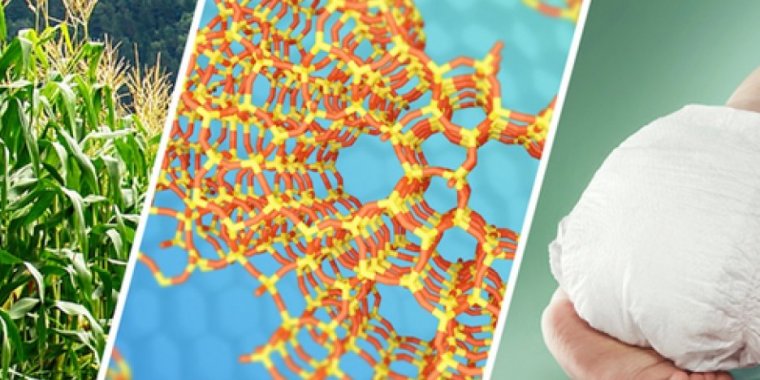| News / Science News |
Chemical researchers discover catalyst to make renewable paints, coatings and diapers
A team led by University of Minnesota Twin Cities researchers has invented a groundbreaking catalyst technology that converts renewable materials such as trees and corn into acrylic acid and acrylates, the key chemicals used in paints, coatings and superabsorbent polymers. The new technology is highly efficient and could lead to lower costs for manufacturing renewable chemicals.

New catalyst technology substantially reduces costs in products including paints, coatings and diapers. Photo: John Beumer, NSF Center for Sustainable Polymers, University of Minnesota
The new catalyst formulation converts lactic acid-based chemicals derived from corn into acrylic acid and acrylates with the highest yield achieved to date. The technology exhibits substantially higher performance when benchmarked against other classes of leading catalysts.
Acrylic acid and associated acrylates are most familiar through uses in everyday items, from paints and coatings to sticky adhesives and superabsorbent materials used in diapers.
These chemicals and materials have been made for the last century from fossil fuels. But in the last few decades, the corn industry has been growing to expand beyond food and livestock feed to manufacturing useful chemicals.
One such corn-derived chemical is sustainable lactic acid, a key ingredient in the manufacturing of the renewable and compostable plastic used in many everyday applications.
Lactic acid can also be converted to acrylic acid and acrylates using catalysts. However, until this new catalyst discovery, traditional catalysts were very inefficient, achieving low yields and making the overall process too expensive.
The new catalyst formulation substantially reduces that cost by improving yield and reducing waste. For the first time, this could reduce the price of renewable acrylic acid below fossil-derived chemicals.
"This is a wonderful example of how addressing important basic research questions that are at the heart of fundamental catalysis can lead to innovative new processes that have true technological promise," said Marc Hillmyer, CSP director and a chemist at the university.
"This work represents a groundbreaking solution to that challenge that will have lasting impact." (U.S. National Science Foundation)
YOU MAY ALSO LIKE





